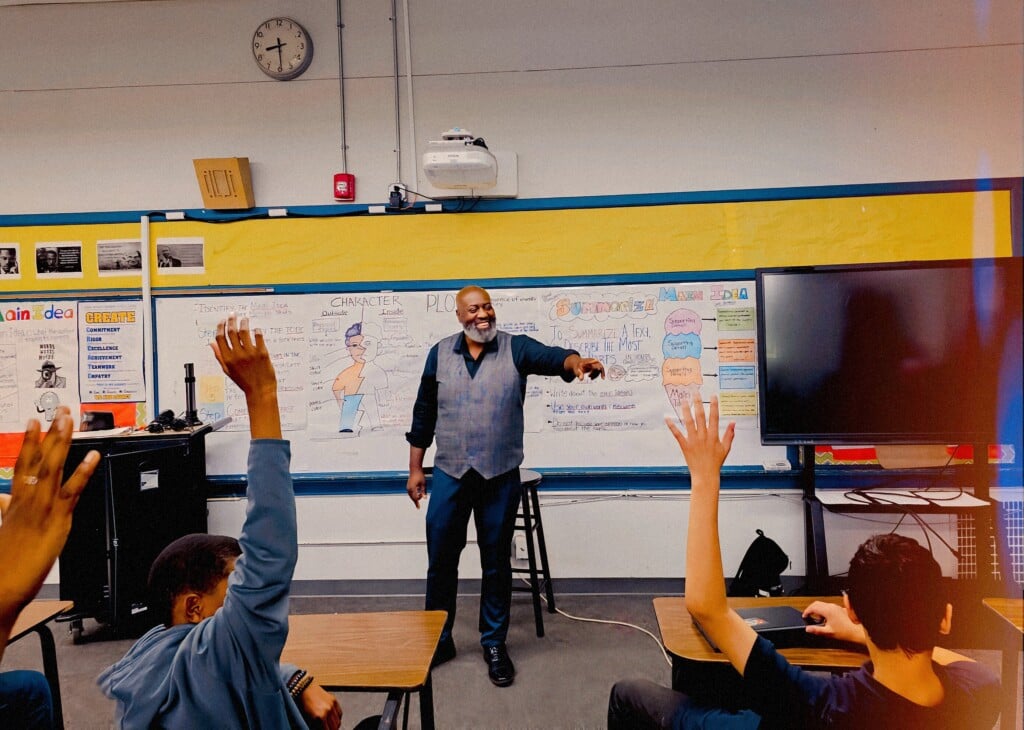Find the Best Primary Science Tuition Singapore for Enhanced Learning
Find the Best Primary Science Tuition Singapore for Enhanced Learning
Blog Article
A Comprehensive Guide to the Numerous Knowing Approaches in Main Scientific Research Guideline
The expedition of diverse understanding approaches in primary science instruction presents a chance for instructors to boost student engagement and understanding significantly. By analyzing hands-on understanding strategies, inquiry-based techniques, and joint strategies, we can determine efficient methods that provide to various finding out designs.

Hands-On Learning Strategies
Hands-on understanding techniques play a pivotal duty in main science direction, engaging students in energetic exploration and testing. These methods permit students to engage straight with sensations and materials, promoting a deeper understanding of scientific ideas. By utilizing manipulatives, designs, and real-life experiments, instructors produce an environment where students can observe, hypothesize, and examine their concepts.
Such methods not only boost understanding yet additionally cultivate important thinking and problem-solving abilities. When trainees participate in tasks like developing straightforward makers, growing seeds, or carrying out chemical reactions, they are urged to ask inquiries and look for solutions via their own observations. This experiential technique helps to debunk complex clinical principles, making them much more easily accessible and relatable.
Additionally, hands-on understanding promotes cooperation amongst peers, as trainees typically function in teams to perform experiments or share findings. This teamwork not just enriches their learning experience however also creates essential social skills. Ultimately, incorporating hands-on strategies in main scientific research direction fosters a long-lasting love of knowing and curiosity regarding the environment, laying a solid foundation for future academic quests in scientific research and past.
Inquiry-Based Knowing
Inquiry-based knowing is a training strategy that encourages students to ask concerns, investigate sensations, and build their own understanding of scientific ideas. This method shifts the emphasis from standard teacher-led instruction to a much more student-centered experience, where learners take the initiative in their instructional journey. By cultivating curiosity, inquiry-based discovering advertises deeper engagement with the material, enabling students to check out topics in a meaningful context.
In method, this strategy commonly entails hands-on experiments, observations, and crucial thinking tasks that align very closely with the scientific technique. Students are motivated to formulate theories, design examinations, and analyze information, which cultivates necessary abilities such as logical and problem-solving reasoning. The function of the instructor in this structure is to help with exploration, leading pupils through the query process while encouraging independent idea and cooperation.
Furthermore, inquiry-based learning supports a feeling of ownership over the learning process, inspiring pupils to seek understanding actively. This method not just enhances understanding of scientific ideas however additionally cultivates a long-lasting love for understanding, outfitting trainees with the abilities needed to browse a progressively intricate world.
Collaborative Understanding Approaches
Joint knowing methods encourage students to take part in purposeful communications with peers, fostering a shared responsibility for their academic outcomes. In primary science instruction, these techniques encourage students to work with each other to explore scientific concepts, address issues, and conduct experiments (primary science tuition Singapore). By joining group activities, students can take advantage of diverse point of views, permitting for richer understanding and retention of scientific understanding
One trick facet of joint knowing is the emphasis on communication skills. Pupils should express their ideas, listen proactively to others, and negotiate concepts, all of which are crucial proficiencies in both real-world and academic contexts. This social interaction not only enhances their understanding of clinical concepts however likewise promotes teamwork and problem resolution skills.
When students see the value of their payments within a team, they are a lot more likely to take possession of their knowing trip. In general, integrating collaborative discovering techniques in main science direction grows a dynamic knowing setting that prepares students for future academic and social difficulties.
Technology Assimilation in Science
The combination of technology in main scientific research instruction enhances finding out experiences by providing innovative devices and resources that support numerous mentor methodologies, consisting of collective discovering - primary science tuition Singapore. Making use of digital systems, simulations, and interactive applications allows trainees to engage deeply with scientific principles, assisting in a much more hands-on approach to learning
Digital laboratories, as an example, allow students to perform experiments safely and effectively, promoting inquiry-based discovering. These tools can replicate real-world scientific situations, allowing students to visualize intricate processes that would be hop over to these guys hard to replicate in a traditional class setting. Additionally, modern technology cultivates communication and cooperation amongst trainees, as they can share findings and interact on projects with on-line platforms.
In addition, multimedia discussions and academic video clips can enhance lessons by satisfying diverse knowing designs, making abstract ideas much more obtainable. Data evaluation devices also empower pupils to collect and translate scientific information, reinforcing vital assuming skills. Overall, the critical incorporation of technology in main scientific research instruction not only improves interaction but also prepares trainees for a highly innovative society, equipping them with crucial skills for future scientific endeavors.
Distinguished Direction Strategies
Set apart guideline approaches are essential for dealing with the varied needs of students in key scientific research education. These techniques enable instructors to customize their teaching approaches to accommodate differing abilities, interests, and learning designs within the class. By utilizing separated instruction, instructors can develop a comprehensive atmosphere that promotes interaction and enhances understanding of clinical principles.
One effective technique is to make use of versatile organizing, which enables students to collaborate with peers at similar skill degrees or with varying point of views. This technique motivates peer understanding and advertises crucial reasoning. In addition, supplying choices in jobs can equip pupils, permitting them to choose jobs that reverberate with their interests while still fulfilling curricular purposes.
In addition, integrating tiered assignments is one more valuable strategy. By creating jobs with differing degrees of complexity, instructors can ensure that all students are appropriately challenged, despite their efficiency. Using formative assessments to assess comprehending additional allows teachers to adjust their training methods dynamically, making sure that each learner obtains the support they require.
Eventually, implementing distinguished direction strategies in main science education not just boosts pupil discovering outcomes however also cultivates an enthusiasm for science, preparing pupils for future academic pursuits.

Final Thought
In recap, efficient primary scientific research guideline demands a diverse approach that includes hands-on learning, inquiry-based techniques, and collective techniques. The assimilation of technology and set apart direction further deals with diverse understanding designs, cultivating an atmosphere favorable to exploration and critical thinking. By executing these methods, educators can enhance trainee interaction and comprehension, eventually nurturing a long-lasting passion for science and query. over here Such extensive techniques are crucial for great site establishing informed and curious future researchers.
The exploration of varied understanding methods in key scientific research instruction provides an opportunity for teachers to improve pupil interaction and comprehension considerably.Hands-on discovering strategies play an essential duty in main science instruction, involving trainees in active exploration and testing.Inquiry-based knowing is an instructional strategy that urges students to ask concerns, examine phenomena, and create their very own understanding of scientific principles.Collective learning approaches encourage trainees to involve in significant communications with peers, fostering a shared obligation for their educational results. In general, incorporating collective knowing strategies in key scientific research guideline cultivates a vibrant learning atmosphere that prepares students for future academic and social challenges.
Report this page